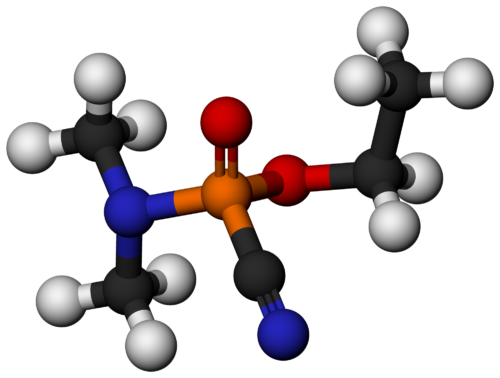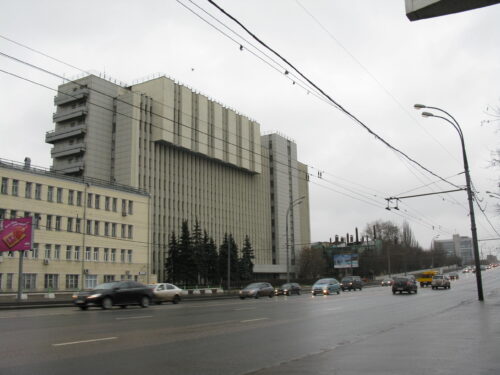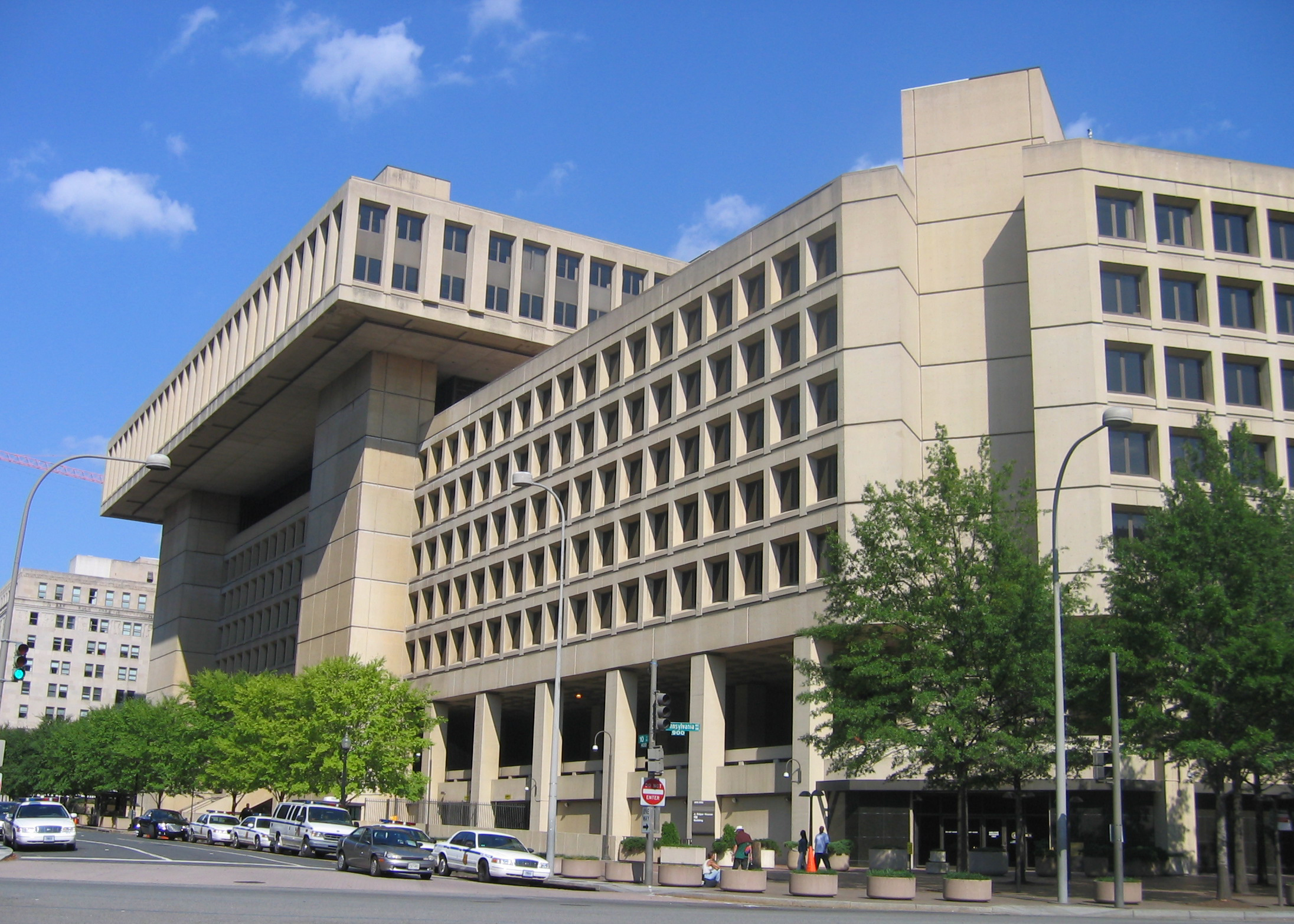J. Edgar Hoover Building, the headquarters of the Federal Bureau of Investigation in Washington, D.C. Credit: Audie / CC BY-SA 3.0 DEED.
Counterintelligence is, in effect, chasing ghosts, which is why the tools used to investigate foreign intelligence activity are secret, like human sources or electronic surveillance.” — Asha Rangappa: FBI Agent, Lawyer, and Educator
Operation Shocker was a counterintelligence operation run by the U.S. Federal Bureau of Investigation (FBI) against the Soviet Union. This operation, which lasted for 23 years, was a significant part of the Cold War espionage activities. Ten Soviet intelligence agents who were operating in the U.S. were identified as a result of the operation. The operation was highly classified, and when two FBI agents died in a plane crash while surveilling a Soviet spy, press and public were misled about the circumstances, and even the agents’ families were told nothing for years.
Operation Shocker
The operation began in 1959 when U.S. Army First Sergeant Joseph Edward Cassidy, assigned to the Army’s nuclear power office near Washington, D.C., was approached by the FBI. He was what’s known as a “dangle”, a means to draw out Soviet spies.
Despite having no previous training, Cassidy was able to make contact with a Soviet naval attaché believed to be a spy with the GRU (foreign military intelligence agency of the Soviet Army General Staff of the Soviet Union) and set up an arrangement where he would provide information to the Soviets in exchange for money.
Soviet requests for information were passed to the U.S. Joint Chiefs of Staff, and various classified information was provided as a result. The principal Russian interest was in information about the U.S. nerve gas program, and Cassidy initially established his credentials by providing genuine data from the U.S. program.

By 1964, Cassidy was in a position to begin pointing Soviet research towards a G-series nerve agent, GJ, which the U.S. thought could not be produced in stable, weaponizable form. Cassidy provided over 4,000 documents on a mixture of real and non-existent research into the new gas, with the U.S. intending to waste Soviet resources attempting to duplicate the work.
In 1970, Cassidy was reassigned to MacDill Air Force Base in Tampa, Florida. The GRU agents he had previously collaborated with in Washington D.C. found it challenging to maintain regular contact with him. As a result, they informed him that he would be providing information to a new, unidentified agent in Florida. The FBI, keen to identify unauthorized agents residing in the U.S., began surveillance near Cassidy’s scheduled drop-off points from March 1971.
Cassidy’s role was to photograph a carefully curated assortment of authentic and fabricated classified documents. These were intended to mislead the Soviets about the progress of U.S. chemical weapons development, troop reductions in Vietnam, and other requested information. He would leave the cameras inside rocks that had been hollowed out at various dead drop locations around St. Petersburg.

The individuals who collected the drops in St. Petersburg were the first Soviet unauthorized agents residing in the U.S. to be identified by FBI counterintelligence. They were Gilberto Lopez y Rivas and his wife Alicia Castellanos, a couple who had met while studying anthropology in Mexico City between 1967 and 1969. Gilberto, a fervent left-wing activist during his college years, was likely recruited then.
Despite the photographic and other evidence collected by the FBI, the Department of Justice did not press charges against them. The couple was permitted to leave the U.S and resume their life in Mexico, facing no significant repercussions for their years of espionage. In a 1978 interview, Gilberto admitted to espionage.
Unintended Consequences?
David Wise, in his book Cassidy’s Run, implies that the Soviet program to develop the Novichok agents may have been an unintended result of the misleading information. Novichok agents are a family of nerve agents, some of which are binary chemical weapons. They were developed at the State Research Institute of Organic Chemistry and Technology (GosNIIOKhT) by the Soviet Union and Russia between 1971 and 1993. Some Novichok agents are solids at standard temperature and pressure, while others are liquids.

As nerve agents, the Novichok agents belong to the class of organophosphate acetylcholinesterase inhibitors. These chemical compounds inhibit the enzyme acetylcholinesterase, preventing the normal breakdown of the neurotransmitter acetylcholine.
Russian scientists who developed the nerve agents claim they are the deadliest ever made, with some variants possibly five to eight times more potent than VX, and others up to ten times more potent than soman. Iran has also been associated with the production of such chemical agents.
Novichok agents came to public attention after they were used to poison opponents of the Russian government, including Sergei Skripal, his daughter Yulia and a police officer who attended the scene in Amesbury, UK (2018), and Alexei Navalny (2020), but civil poisonings with this substance have been known since at least 1995.
In November 2019, the Organisation for the Prohibition of Chemical Weapons (OPCW), which is the executive body for the Chemical Weapons Convention (CWC), added the Novichok agents to the “list of controlled substances” of the CWC “in one of the first major changes to the treaty since it was agreed in the 1990s” in response to the 2018 poisonings in the UK.
One of the Novichok agents, A-234, is an organophosphate nerve agent. It was developed in the Soviet Union under the FOLIANT program and is one of the group of compounds referred to as Novichok agents that were revealed by Vil Mirzayanov, a Russian chemist who worked at GosNIIOKhT and who now lives in the U.S. In March 2018, it was identified as the agent used in the poisoning of Sergei and Yulia Skripal.

Conclusion
Operation Shocker was a significant counterintelligence operation that showcased the complexity and depth of Cold War espionage activities. While it aimed to mislead the Soviet Union and waste their resources, it may have inadvertently led to the development of the Novichok agents.
*The views and opinions expressed on this website are solely those of the original authors and contributors. These views and opinions do not necessarily represent those of Spotter Up Magazine, the administrative staff, and/or any/all contributors to this site.

